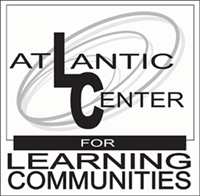By Sue Maxam, Ed.D., Pace University
This semester will go down in the history books as one that, quite literally from one day to the next, changed the way we teach and learn dramatically. I’ve always been a huge proponent of in-person teaching because of the “human connection.” There’s the spontaneity; extemporaneous conversations; informal networking and “friend-making;” and countless other benefits to the students. Online learning, to me (and many other faculty members and students around the nation!), felt like it was going to be far too transactional, when we, as a nation, were arguably facing one of the biggest health crises of the century…a time when we NEEDED that human connection. Not only that, we needed to show empathy, as far too many of our students were impacted personally by COVID-19. They and/or their families were suffering from the virus; lost their jobs and/or internships; had accessibility issues with regard to technology; needed to now homeschool their children (for those adult learners, which comprise an ever-growing percentage of college students); were dealing with much more pronounced mental health issues; etc. The list seemed endless. So faculty everywhere had to learn how to teach effectively online (a skillset foreign to most); demonstrate empathy and compassion for what our students were going through; foster that human connection; AND try to ensure students felt a sense of belonging.
I was teaching a learning community on mindfulness and cultural intelligence with a 20-hour civic engagement component…a course that thrived (and depended) on in-person instruction. Students were already starting to work with our non-profit community partners helping out with food banks; reading to children at after-school programs; etc. when all that came to an abrupt halt. Also as part of the course requirement they were planning on-campus advocacy campaigns to raise awareness of important topics such as bullying, mental health, human rights, etc. So what did we do to ensure we not only met the course requirements, but created a sense of community which promoted that human connection? Here are just a few of the changes we implemented:
- We started each class with 3-4 minutes of “furbaby” fun where students would show everyone their dogs and/or cats (one student even had a “scale-baby”…a snake draped around his neck!!!). Students LOVED this!
- All civic engagement activities were now online, so students chose topics they were passionate about and wrote petitions; called legislators; sent letters to people in the health care field; donated gloves and face masks; served as “empathy listeners” through 7 Cups (a nonprofit that promotes active, empathetic listening to people in need); etc.
- We converted individual projects into group projects to promote the human connection and allowed them to choose the topic in which they were most interested. These groups created highly successful social media campaigns to educate others about their topics (which actually reached far more people than their original project would have reached and continue now even though the semester ended nearly a month ago!).
- Students researched and reported on how COVID-19 impacted (or was impacted by) virtually every aspect of society…health; inequities; the environment; animals; personal finances; the economy; (And this is one of the main points of a learning community…the intersectionality of seemingly disparate topics.)
- We held daily open office hours (in addition to “by appointment” ones) since so many of our students were struggling in multiple ways as a result of the pandemic. We offered them at different times each day as our students were all in different time zones all around the world!
- We ended each class with each student noting one thing (no matter how small) for which they were grateful.
I must say, by the end of the semester, I felt like I learned so much more from our students than I ever could have taught them. They demonstrated such resilience, compassion, passion, flexibility, and commitment. It was truly an honor to work with them!
Sue Maxam, Ed.D. is the AVP for Undergraduate Education at Pace University.
